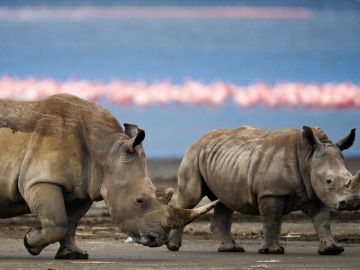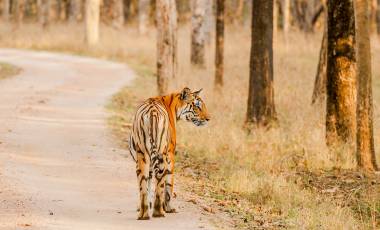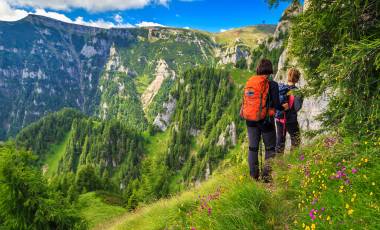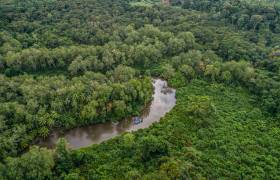Heading out on a wildlife adventure is an exhilarating experience, where each destination unveils its own cast of incredible creatures. But to spot these signature species in the wild, you’re going to need some help from expert wildlife trackers and guides who know the terrain like the back of their hand and can give you insight into these unique habitats. Whether you’re looking to spot Bengal tigers in India’s lush forests, watch herds of elephants play in Botswana or observe brown bears from hides in Romania’s Carpathian Mountains, you can rest assured our experts are the best possible guides to lead you to these once-in-a-lifetime encounters.
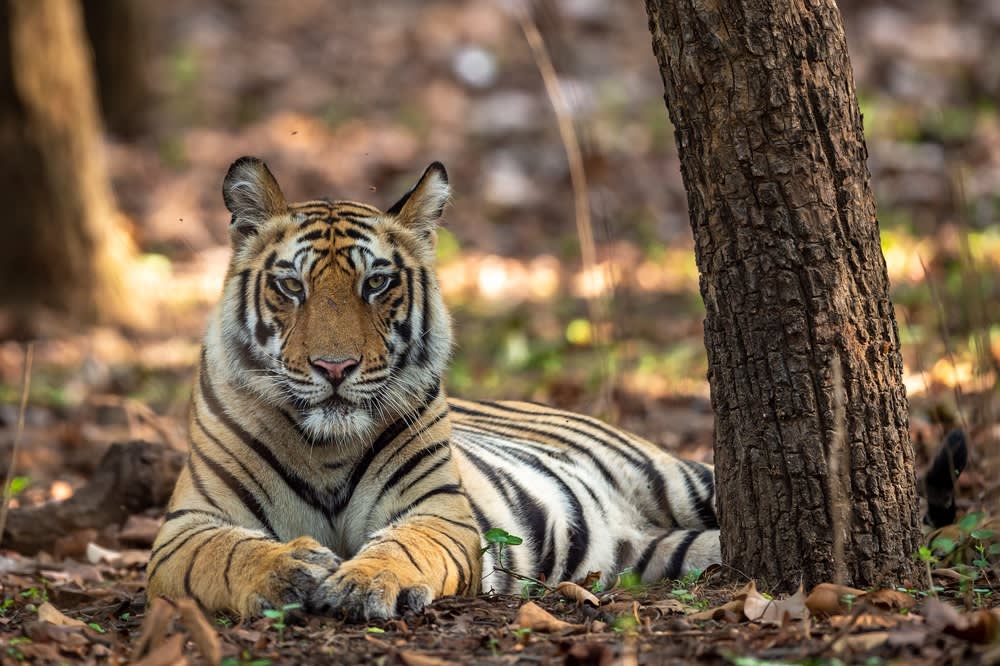
See Bengal tigers prowl in India
On our India Tiger Safari, you’ll embark on 15 thrilling game drives through Pench, Kanha and Bandhavgarh national parks, over the course of 16 days, which is designed to heighten your chances of spotting one of the world’s most elusive cats in the wild.
In the mid-20th century, rampant poaching and habitat loss led to a drastic decline in tigers across the country, prompting the Indian government to take significant steps towards conservation. In the 1970s, the launch of ‘Project Tiger’ marked a turning point, establishing protected areas like Pench, Kanha, and Bandhavgarh as sanctuaries for these majestic creatures to roam freely. On your safari drives, your vehicle will follow rough tracks throughout the parks, and your drivers will listen to the radio for any possible Bengal tiger sightings.
During these rides, your vehicle will be accompanied by a local Forest Guard, who have excellent awareness of the park’s local wildlife and are skilled in spotting tigers. Your local leader will rotate around the safari jeeps to tell you more about the habits of Bengal tigers in the area. The process of tracking tigers is also invaluable in monitoring the tiger population’s health, behaviours, and movement patterns, providing essential data for conservation efforts. On days six to eight you and your group will embark on five game drives through Kanha National Park, known as one of the greatest wildlife reserves in India. Alongside sightings of Indian leopard, dhole, sloth bear, Bengal fox and Indian jackals, the park boasts an estimated population of 500 Bengal tigers – so the chances of spotting these cats in the wild here are greatly increased.

Find black and white rhinos in Kenya
When you think of the quintessential safari experience, Kenya often springs to mind, and for good reason. Every national park in the country is like a treasure trove of wildlife where lions, leopards, elephants, buffaloes and rhinos roam freely. And on our Gorilla & Masai Mara – Camping trip, you’ll spend five days exploring and enjoying game drives in the Masai Mara and Lake Nakuru National Park.
Located in the Great Rift Valley of Kenya, Lake Nakuru National Park was established initially as a bird sanctuary and later upgraded to a national park in 1968. Home to an array of wildlife including millions of pink flamingos, the park is also one of the best places on the planet for spotting the endangered black and white rhinos in their natural habitat.
After two rhinos were introduced back in 1984, estimates show that today there are around 150 individuals in the park, with 80% of the population being white rhinos. So there’s a high chance you’ll see these incredible creatures for yourself on day four of your adventure when our expert wildlife tracker will take you on an exhilarating afternoon game drive to spot flamingos, leopards in the fever trees and rhinos which are easily spotted across the savannah. A great spot for keen photographers, you may even get the chance to capture a photo of white rhinos against the backdrop of Lake Nakuru and flocks of pink flamingos.
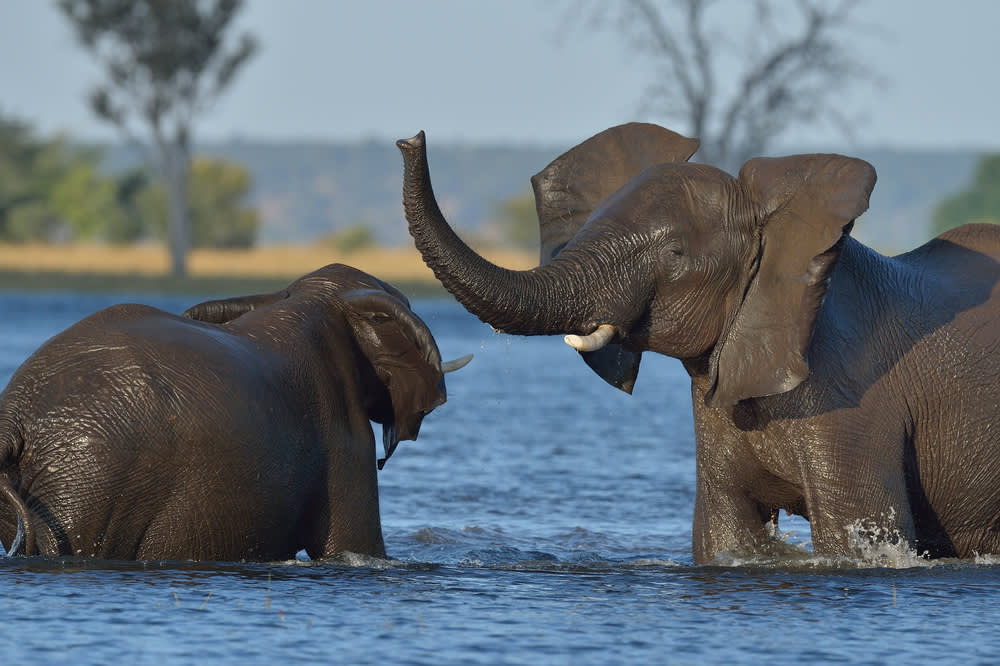
Spot elephants bathing in the Chobe River in Botswana
On day two of our Botswana & Zimbabwe Lodge Safari you’ll get to enjoy an epic three-hour boat safari in Chobe National Park. The diverse ecosystems within Chobe, including lush floodplains, woodlands, and the Chobe River, provide the perfect source of food and water, creating an ideal habitat for elephants. So, it should come as no surprise that Chobe boasts one of the highest concentrations of elephants in the world, with estimates surpassing 50,000 individuals. And this is what sets Chobe apart from other viewing locations, because of the sheer number of elephants that can be observed in one place, especially during the dry season (April to October) when large herds congregate along the riverbanks.
Witnessing these massive herds in their daily activities, from bathing, playing and socialising to crossing the river, is a breathtaking experience that you’ll never forget. And thanks to our local guide’s expert knowledge, you can sit back and relax while they tell you more about the lives of these gentle giants, including Chobe National Park’s ongoing conservation efforts to protect the species for generations to come. Floating along the river also offers a unique vantage point, allowing you to witness elephants in close proximity as they gather along the riverbanks.
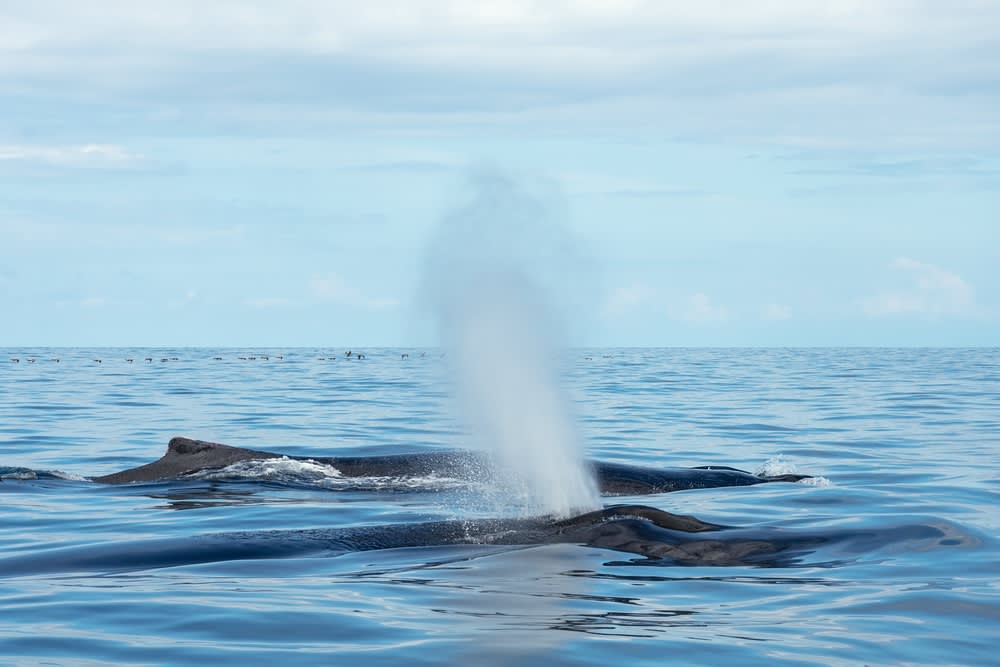
Watch whales breach in Costa Rica
In Costa Rica, you’re spoilt for choice when it comes to unique wildlife sightings. And on our Costa Rica’s Coastal Secrets trip, you have the chance to spot; vibrant coloured toucans and caimans on boat tours in Tortuguero National Park; howler monkeys in Cahuita National Park and three-toed sloths, tapirs and scarlet macaws as you make your way through cloud forests on foot, in Corcovado, Costa Rica’s largest national park. But perhaps one of the most impressive sights you’ll see in Costa Rica is a pod of humpback whales breaching off the coast of Caño Island.
On day 11 of our adventure, you’ll head out on a small boat in the Pacific waters of Drake Bay to Caño Island in the hopes of spotting these majestic creatures, alongside white-tipped reef sharks, olive ridley turtles and manta rays. Sightings may vary depending on various factors such as weather conditions, water temperature, and the whales’ migration patterns, so one of the best times to spot humpback whales in this area is during their migration season which typically runs from July to November. At this time, pods of whales travel long distances from their feeding grounds in colder waters to warmer tropical climates for breeding and calving. What makes their sightings such an unforgettable experience is that this species of whale is known for their acrobatic, playful behaviour, such as tail-slapping, breaching, and flipper-slapping, making them fascinating for whale watchers.
Bottlenose, spotted, common and spinner dolphins are also commonly sighted in the clear waters surrounding Caño Island year-round, which can enhance this wildlife experience even further. You’ll also get the opportunity to go snorkelling off the shores of the island too. With great water visibility, it’s one of the best snorkelling spots in the whole of Costa Rica, where you may have the chance to see schools of pufferfish, cornet fish, parrot fish and seahorses.
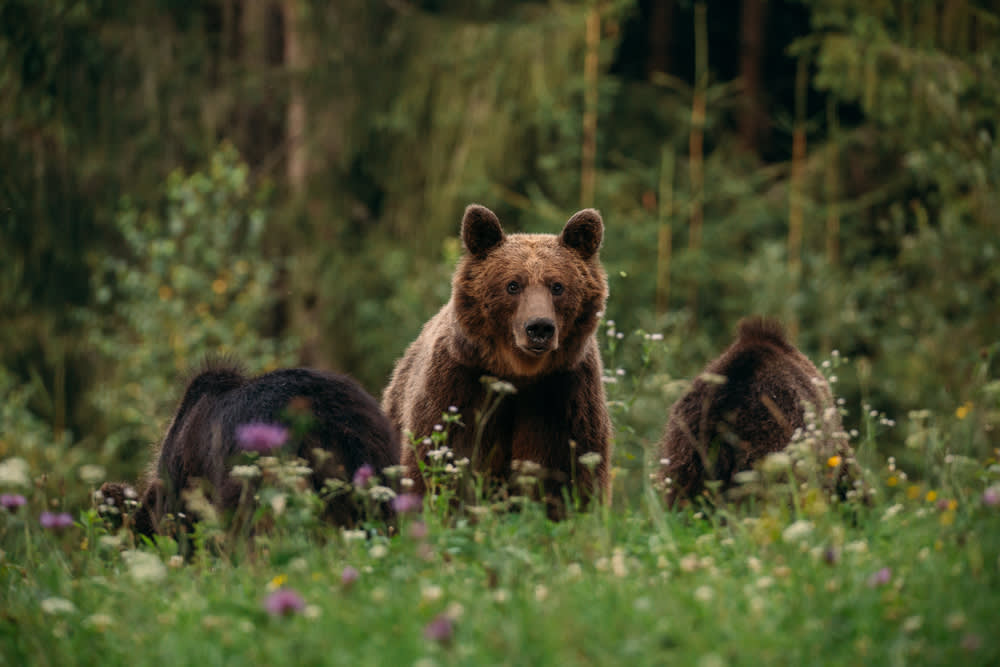
Observe brown bears from your own hide in Romania
On our Carpathian Walking & Bears trip, you’ll get to discover one of the last remaining wilderness areas in Europe. En route, you’ll trek through hushed virgin forests and sweeping canyons in the Carpathian Mountains, visit the unique Kalibash villages of Magura and Pestera and explore the legendary Bran Castle, that inspired Bram Stoker’s horror novel, Dracula. But one of the highlights of this adventure for many is joining our bear tracking experts and local foresters on day three for an evening of brown bear watching deep in the Barza Valley.
Boasting the largest population of bears in Europe, the Carpathian Mountains are an ideal location for viewing bears in their natural habitat, with an estimated 6,000 roaming free in the forests. And with the forestry commission’s permission, you and your group will be able to access their safe hides. Here, your expert leader will explain how researchers and conservations use a combination of traditional and modern methods to track the brown bears’ movements, including motion-activated cameras, footprint and scat analysis and remote sensing which helps to identify suitable bear habitats and assess potential threats to these habitats. The best time to watch brown bears in their natural habitat is from May to November. Studies show that they are the most active in autumn when they’re stocking up on berries for their hibernation season.
So, what’s stopping you from booking an incredible wildlife adventure to remember in 2024? To view our full collection of wildlife trips, click here.
